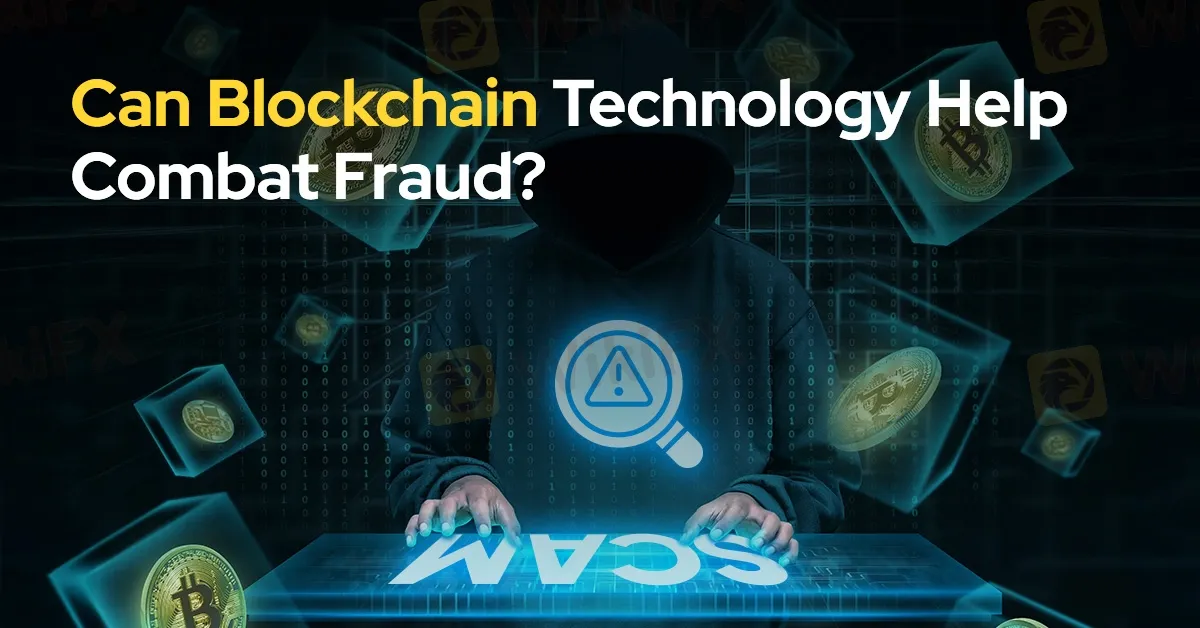Can Blockchain Technology Help Combat Fraud?
Abstract:Fraud has long been a challenge across industries, leading to significant financial losses for businesses and individuals. With technological advancements, fraudulent activities have become increasingly complex. However, it is believed that blockchain technology offers a promising solution in the fight against fraud, providing enhanced security and transparency.

Fraud has long been a challenge across industries, leading to significant financial losses for businesses and individuals. With technological advancements, fraudulent activities have become increasingly complex. However, blockchain technology offers a promising solution in the fight against fraud, providing enhanced security and transparency.
Blockchain functions as a decentralised and immutable database that records transactions across multiple computers, called nodes. It uses cryptographic techniques to secure data and ensure its integrity. Transactions are grouped into blocks, which are then linked to form a chain, creating a tamper-proof record. This structure makes blockchain resistant to unauthorised changes, enhancing its reliability as a tool for fraud prevention.
The decentralised nature of blockchain removes the need for a central authority, reducing the risks of tampering or manipulation. Its records cannot be altered without consensus from the network, making it difficult for malicious actors to modify transaction data. This characteristic increases the systems overall security.
Additionally, blockchain promotes transparency by allowing all network participants to access transaction records. This openness ensures accountability and discourages fraudulent activities, as any unauthorised actions can be easily traced.

Blockchain technology has been applied in various fields to reduce fraud. In supply chain management, it has been used to track the movement of goods, ensuring transparency and preventing counterfeiting or unauthorised changes. In the financial sector, blockchain has provided secure and tamper-proof records, helping to combat identity theft, money laundering, and fraudulent payments.
Digital identity verification is another area where blockchain shows promise. By offering a decentralised and verifiable system, it reduces identity fraud and grants individuals greater control over their personal data.
Despite its potential, blockchain faces several challenges in fraud prevention. Scalability remains a key issue. As the number of transactions and participants grows, blockchain networks must adapt to handle increased activity efficiently. Ensuring that systems remain secure and cost-effective while processing large volumes of data is essential.
Interoperability is another hurdle. Integrating blockchain with existing systems requires collaboration and standardisation efforts to enable seamless communication between different networks. Additionally, the reliance on cryptographic keys for authentication presents vulnerabilities, as the loss or theft of private keys could result in irreversible asset losses.
The successful adoption of blockchain in fraud prevention relies on collaboration among governments, regulatory bodies, businesses, and technology providers. Establishing clear frameworks, standards, and best practices is crucial for addressing challenges like scalability, security, and interoperability.
Regulatory clarity is also vital to ensure compliance with laws while leveraging blockchains benefits. A cooperative approach can pave the way for wider acceptance and integration of blockchain-based fraud prevention solutions.
The future of blockchain in fraud prevention looks promising. Technological advancements, such as improved consensus mechanisms and privacy-enhancing tools, could address current limitations. Innovations in artificial intelligence and machine learning may further enhance fraud detection by analysing blockchain data for patterns and anomalies.
Blockchain has the potential to transform fraud prevention by improving security, transparency, and accountability. Addressing its challenges through collaboration and continued development will bring industries closer to a secure and trustworthy digital economy.

Read more

Bitcoin’s Market Drop: A Warning or an Investment Opportunity?
Bitcoin has taken a sharp fall, dropping to its lowest level since June 2022. Now hovering just above $84,000, this decline has made investors uneasy and raised concerns about the future of the crypto market. However, while some see this as a setback, others believe it could be an opportunity to invest. Which side are you on?

Pi Network: A Revolutionary Investment or a Speculative Gamble?
As the digital currency landscape continues to evolve, the Pi Network has emerged as a novel concept, promising to democratise cryptocurrency mining. Is Pi Network a revolutionary investment or a speculative gamble?

Have You Heard of MOA and BANNED? Beware These Crypto Token Scams
Discover the MOA and BANNED token scams on the Ronin blockchain. Learn how to spot and avoid them with simple, practical tips. Stay safe!

Massive Crypto Scam in Philippines: Education Pioneer Wealth Society Exposed
Unmasking the $300M crypto scam by Education Pioneer Wealth Society in the Philippines. Learn about this pig butchering fraud and how to fight back.
WikiFX Broker
Latest News
TriumphFX: The Persistent Forex Scam Draining Millions from Malaysians
Lawmakers Push New Crypto ATM Rules to Fight Fraud
2025 WikiFX Forex Rights Protection Day Preview
PH Senator Probes Love Scams Tied to POGOs
Mastering Calm: How to Stay Cool in Forex Trading?
The End of Costly USDT Transfers: Tron Reshapes Stablecoin Transactions
BP\s shareholders want it to make money, not climate policy
2025 SkyLine Guide Thailand Opening Ceremony: Jointly Witnessing New Skyline in a New Chapter
Why does Botbro change the domain name?
Safety Alert: FCA Discloses These 11 Unlicensed Financial Websites
Rate Calc
